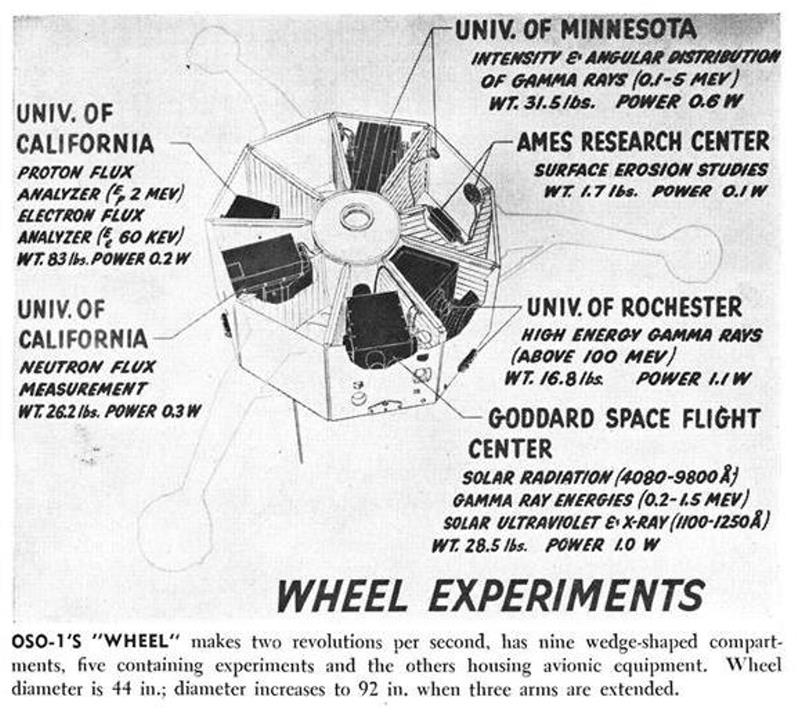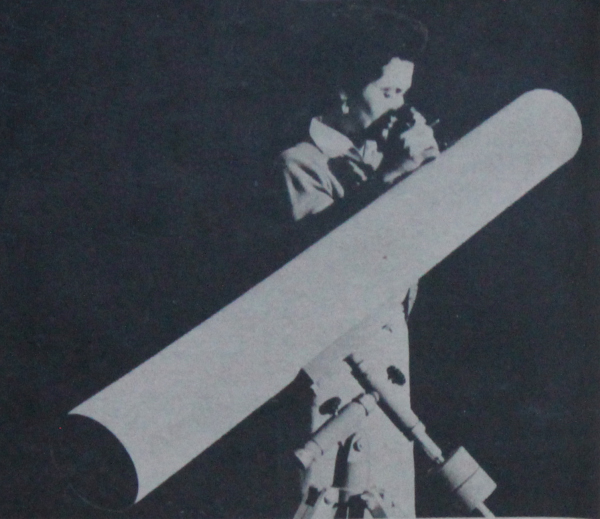
by Gideon Marcus
Look up at the night sky, and what do you see? Darkness and countless points of light. Maybe a planet or two, brightly untwinkling in the black. It is interesting that the sky should be black – after all, there are lots of photons (light particles) buzzing around the sky even after the sun has gone down. You've got radio waves and x-rays. Gamma rays, microwaves, and the shimmering veil of infrared – heat. And yet, we can't see any of it. Just the pinpricks of stars on the night's sheet.

Part of that is a biological limitation. Our eyes only see a tiny window of the electromagnetic spectrum: from purple to red, the colors of the rainbow. Some species of life see a bit further, into the ultraviolet or the infrared. Only one species has crafted the ability to see beyond this range: humanity. With our scintillators and geiger tubes and giant dishes, we can see waves of all kinds.
Well, not quite. You see, even with these detectors, we are still half blind. The blanket of air covering the Earth blocks many wavelengths of photons from outer space: X Rays, Cosmic Rays, many wavelengths of Ultraviolet. To see the truly unseeable, you have to go into orbit.
That's when we really can look at those points of light. These are the stars, those busy factories of nuclear fusion, busily turning hydrogen into helium. There are 100 billion in our galaxy, alone! And we happen to have a lovely example just 93 million miles away, orders of magnitude closer than Alpha Centauri, the second nearest system. While we have been observing the sun with our eyes for thousands of years, and with instruments for several hundred, these observations have always been hampered by the screening interference of the atmosphere.

Enter OSO – the Orbital Solar Observatory. This 200kg spacecraft is the heaviest American science satellite to date, dwarfing all of the Explorer series of probes. It is the first satellite launched devoted to the long-term study of the sun, in wavelengths you can't see from the Earth's surface.
There are 13 experiments on board the (appropriately) solar-powered craft including three X-Ray detectors, four Gamma Ray monitors, an ultraviolet sensor, several particle counters, and a dust sampler. Not only will OSO be up in orbit for months, but it will be joined by successors in the series such that, for the next 11 years (a complete solar cycle of sunspot maximums and minimums), we will have continuous measurements of our star. It is an unprecedented experiment, one which will tell us much about the nearest star and, by extension, the rest of the Galaxy's stars.

Not only that, but we will learn a great deal about solar storms and the hazards of radiation to human spaceflight. This will give us a better idea of when and for how long it is safe for astronauts to travel in space, on the way to the Moon, for instance (NASA Director, James Webb, says he expects a landing by 1968!)
When will this ambitious project start? Why…today, March 7, 1962, in fact! It was launched from Cape Canaveral this morning, and to all indications, it is working flawlessly. It is the kind of mission that won't get a lot of press, particularly when compared to the glory that cloaked Glenn's manned Mercury mission last month. Nevertheless, I think OSO deserves attention and praise. It constitutes a genuine leap in technology and it extends the eye of our race far above the clouds in a way no previous satellite has done.
If they gave out Hugos for unmanned probes, this one would get my vote!

On the other hand, OSO-1 has plenty of competition for that award, and it's sure to get much more. Tiros 4, the fourth weather satellite, joined its still-functioning older brother (#3) last month on the 8th, and there have been a few mystery military launches since then. The President has clamped down on Air Force flights as of the beginning of the year, so I don't know much about them save that two were Discoverer film-based spy sats and one was a Samos live-TV spysat. Another launch happened just today, but it was classified, and I know nothing else about it. (It's ironic that the reason for the information clamp-down is that the Soviets accused us of employing surveillance satellites, and we're trying to hide it; I'm afraid the cat's already out of that bag!)
So stay tuned…there's more yet to come!












